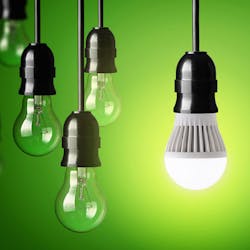Pacific Gas & Electric proposing $2B+ Energy Efficiency Initiative to cut C02 Emissions by 35M Metric Tons
California utility giant Pacific Gas & Electric is proposing a wide-ranging energy efficiency plan that would help customers save more than $2 billion over the next seven years, the company said.
PG&E’s submission to the California Public Utilities Commission announced this week commits to long-term development of energy efficiency innovations as well as pushing for improvement to the state’s building codes and appliance standards. The nation’s commercial buildings alone contribute to nearly 40 percent of emissions in the U.S., according to reports.
The plan covering energy efficiency programs from 2024 to 2031 includes proposed equipment incentives and financing programs, as well as support for all-electric homes to cut carbon emissions from heating and cooking generation. PG&E wants to use it’s EE plan to reduce about 35 million metric tons of CO2 by 2031.
“This proposal thoughtfully supports customer affordability and embraces a decarbonized future by providing customers with a variety of energy efficiency tools and solutions. Our programs are focused on our triple bottom line of supporting the customers we are privileged to serve, healing the planet, and driving California’s prosperity. All the initiatives outlined in the EE plan are done with one focus in mind: to better serve our customers,” said Aaron August, PG&E’s Vice President of Business Development and Customer Engagement.
Achieving that bottom line does carry its own costs for customers. PG&E forecasts that its EE plan will cut electric bills but raise natural gas bills with some $1.4 billion in rates collected over four years through 2027.
Other parts of the proposed program include workforce education on energy efficiency technology. PG&E also will support customers in high fire threat districts by pairing EE initiatives with backup generation and microgrids.
The utility serves close to 16 million customers in northern and central California. It has scores of large-scale commercial and industrial customers within that service territory.
About the Author
Rod Walton, EnergyTech Managing Editor
Managing Editor
For EnergyTech editorial inquiries, please contact Managing Editor Rod Walton at [email protected].
Rod Walton has spent 17 years covering the energy industry as a newspaper and trade journalist. He formerly was energy writer and business editor at the Tulsa World. Later, he spent six years covering the electricity power sector for Pennwell and Clarion Events. He joined Endeavor and EnergyTech in November 2021.
Walton earned his Bachelors degree in journalism from the University of Oklahoma. His career stops include the Moore American, Bartlesville Examiner-Enterprise, Wagoner Tribune and Tulsa World.
EnergyTech is focused on the mission critical and large-scale energy users and their sustainability and resiliency goals. These include the commercial and industrial sectors, as well as the military, universities, data centers and microgrids. The C&I sectors together account for close to 30 percent of greenhouse gas emissions in the U.S.
He was named Managing Editor for Microgrid Knowledge and EnergyTech starting July 1, 2023
Many large-scale energy users such as Fortune 500 companies, and mission-critical users such as military bases, universities, healthcare facilities, public safety and data centers, shifting their energy priorities to reach net-zero carbon goals within the coming decades. These include plans for renewable energy power purchase agreements, but also on-site resiliency projects such as microgrids, combined heat and power, rooftop solar, energy storage, digitalization and building efficiency upgrades.

